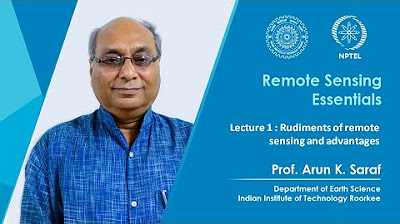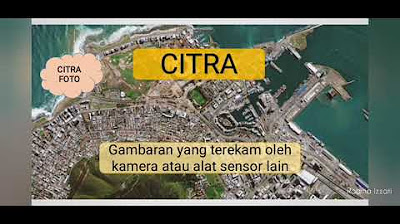Definisi Peta, Peta Mental, dan Peta Kartografis
Summary
TLDRIn this video, the instructor introduces the foundational course in cartography, sharing their academic background and research interests in remote sensing, environmental studies, health, and agriculture. The course focuses on essential cartography concepts such as map definitions, map-making techniques, coordinate systems, and map projections. The instructor emphasizes the practical skills necessary for map creation and the critical role of maps as communication tools. The course includes active learning, practical assignments, and discussions, with a strong focus on both theoretical knowledge and hands-on mapmaking skills.
Takeaways
- 😀 Introduction to the course: The instructor introduces herself, provides her background in cartography and remote sensing, and invites students to contact her for any queries.
- 😀 Course Overview: The course is a foundational cartography class, which will cover the basics of map-making and will be followed by more advanced topics in later semesters.
- 😀 Learning Objectives: The course aims to equip students with knowledge and skills in map representation and the concepts behind cartography.
- 😀 Key Topics: The course will cover a range of topics such as definitions of maps, cartographic methods, map classification, coordinate systems, and map scale.
- 😀 Cartography Definition: According to the International Cartographic Association (ICA), cartography is the art, science, and technology of map-making, which involves preparing, using, and communicating through maps.
- 😀 Map Types: The course discusses different types of maps, including mental maps (subjective representations) and physical maps (objective, tangible representations).
- 😀 Importance of Cartography: The role of cartography is emphasized as a means to represent real-world information clearly and effectively for the user, aiding in communication and decision-making.
- 😀 The Nature of Mapping: Mapping is introduced as a process of simplifying and representing the Earth's vast, complex information into manageable, understandable formats.
- 😀 Map Functions: Maps serve multiple functions, including navigation, city planning, resource management, and educational purposes.
- 😀 Practical Application: The course highlights the practical side of cartography, where students will apply their learning in projects that involve map-making and visualization of geographic data.
Q & A
What is the main objective of the Basic Cartography course?
-The main objective of the Basic Cartography course is to equip students with knowledge and skills in map representation, covering the fundamental concepts of cartography and the technical aspects involved in creating maps.
Who is the instructor for the Basic Cartography course?
-The instructor for the course is Video Nahdiatul Fikriyah, also referred to as Video, who has a background in cartography and remote sensing from UGM and University of Twente, with research interests in environmental science, health, and agriculture.
What are the key research interests of the instructor?
-The instructor's research interests include remote sensing, environmental studies, health, agriculture, forestry, image processing, and geovisualization, all of which are relevant to the topics in the Basic Cartography course.
What topics will be covered in the Basic Cartography course over the semester?
-The course will cover various topics such as the definition of maps, map mentalities, the essence of mapping, map functions, classification of maps, and the use of coordinate systems. It will also include topics on map scales, projections, three-dimensional concepts, map generalization, and map symbols.
What is the difference between mental maps and physical maps?
-Mental maps are subjective, stored in the human brain, and are shaped by individual experience and perspective. They may differ between individuals. Physical maps, on the other hand, are objective, tangible, and represent geographical information in a standardized format that can be universally understood.
What is the significance of scale in map-making?
-Scale in map-making determines the level of detail and the area represented on the map. It is essential for understanding the relationship between distances on the map and real-world distances. A larger scale shows more detail, while a smaller scale covers a broader area with less detail.
What are the functions of maps in practical applications?
-Maps serve various functions, including navigation, city planning, resource management, education, and land ownership documentation. They help in visualizing geographical relationships, planning infrastructure, and managing natural resources.
How does cartography function as a communication tool?
-Cartography functions as a communication tool by representing real-world conditions in a simplified and visually understandable form. It allows geographers and mapmakers to convey complex geographical information to a broader audience, helping users interpret spatial data and relationships.
Why is it important to select specific information for inclusion in a map?
-It is important to select specific information for inclusion in a map to avoid overcrowding the map with too much data. A clear and focused map ensures that the key information is effectively communicated to users without overwhelming them.
What are some of the key tools and references used in the Basic Cartography course?
-The course uses several references, including textbooks by Suwarjono and Crampton, as well as materials on geospatial data visualization. These resources help students understand the theory and practice behind cartography and map creation.
Outlines

This section is available to paid users only. Please upgrade to access this part.
Upgrade NowMindmap

This section is available to paid users only. Please upgrade to access this part.
Upgrade NowKeywords

This section is available to paid users only. Please upgrade to access this part.
Upgrade NowHighlights

This section is available to paid users only. Please upgrade to access this part.
Upgrade NowTranscripts

This section is available to paid users only. Please upgrade to access this part.
Upgrade Now5.0 / 5 (0 votes)





